Thanks to the local abundance of clay and the application of new technology for making pottery, villagers in Kim Lan Commune in Gia Lam District, Hanoi have now developed their traditional craft with diverse products which have a solid position in the market.
Previously, villagers in Kim Lan used traditional kilns to bake pottery which used a great amount of energy, seriously affecting the local’s health and causing environmental pollution. With this type of kiln, the locals had to grind coal before mixing it with coal residues, soil and water and shaping the mixture into round pieces which were placed on walls to dry. Raw pottery products and pieces of coal were then placed into the kiln and baked for days.
Although aware of the disadvantages of the traditional kiln, the locals lacked capital to invest in new technology. Seeing the difficulties the locals faced, the Danish Embassy in Vietnam coordinated with the Ministry of Trade and Industry to invest 6.5 million dollars from the “Green Investment” program in the local industry. The Danish Embassy gave 50% of the capital to households in Kim Lan to expand production and shift to baking pottery using an industrial method.
Nguyen Van Lan, a local who benefits from the program, said, “My family received more than 100 million dong from the project to buy a kiln which uses gas that initially brought more economic efficiency than the traditional kiln”. For kilns using coal, it takes six days to bake pottery, including one and a half for placing raw pottery and pieces of coal into the kiln, four days for baking, and one day waiting for the kiln to cool. With the new kilns it only takes two days to complete the same process.
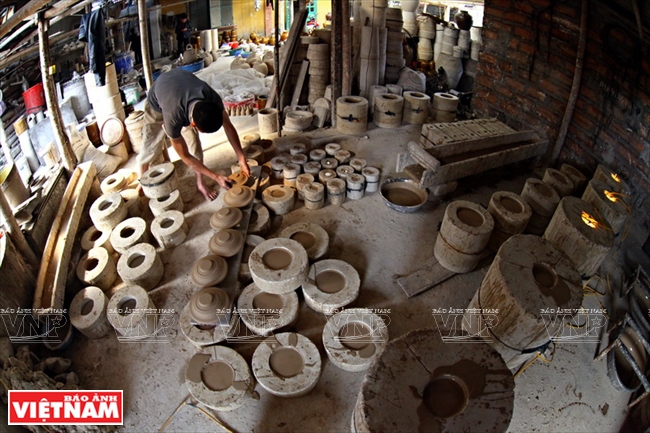
Except for the use of gas kilns, other processes of pottery production in Kim Lan Village are kept traditional.
Photo: Tran Cong Dat/VNP

Based on customers’ orders, potters in Kim Lan can hand make delicate pottery, which requires more effort
to produce and costs more than those made through mass production. Photo: Tran Cong Dat/VNP
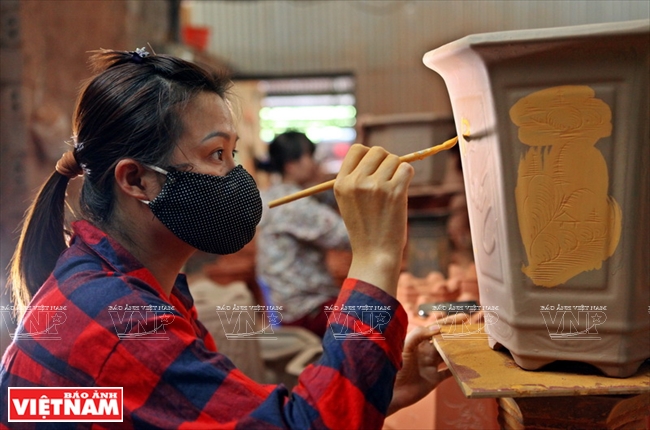
A workshop producing bonsai pots in Kim Lan Village. Photo: Tran Cong Dat/VNP
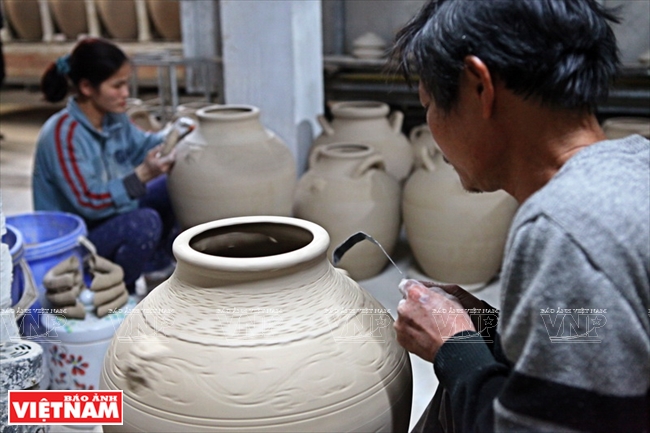
Decorating patterns on a ruou can container. Photo: Tran Cong Dat/VNP
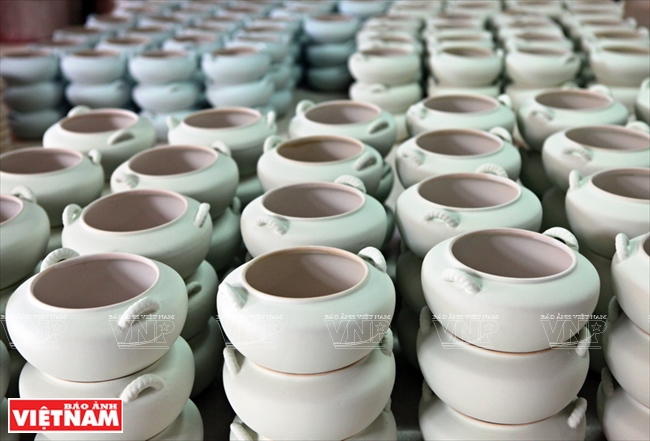
Lim Lan Villagers produce mainly household utensils like pots and tureens.
In the photo: raw products before enameling. Photo: Tran Cong Dat/VNP
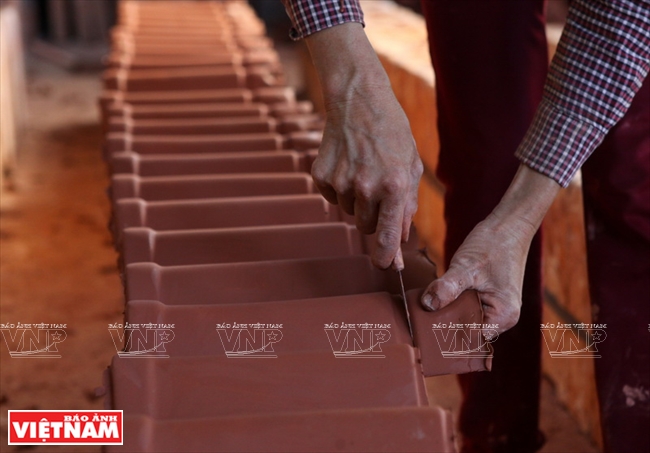
Pottery tile is also a signature product of Kim Lan Village. Photo: Tran Cong Dat/VNP
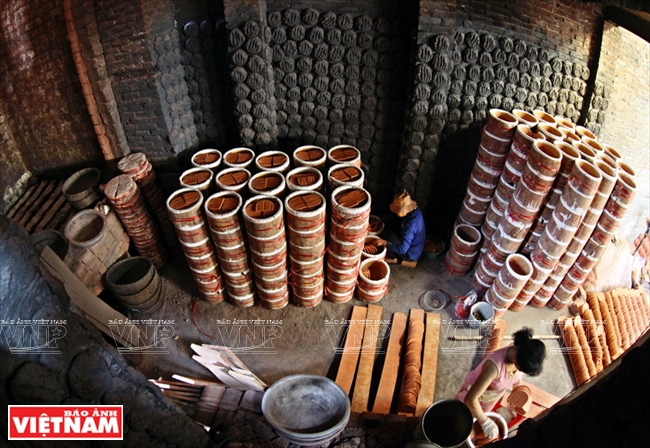
Five years ago, the commune had 1,000 households using traditional kilns, the number has now
decreased to less than 100. Photo: Tran Cong Dat/VNP

Pottery products are seen everywhere in Kim Lan Village. Photo: Tran Cong Dat/VNP
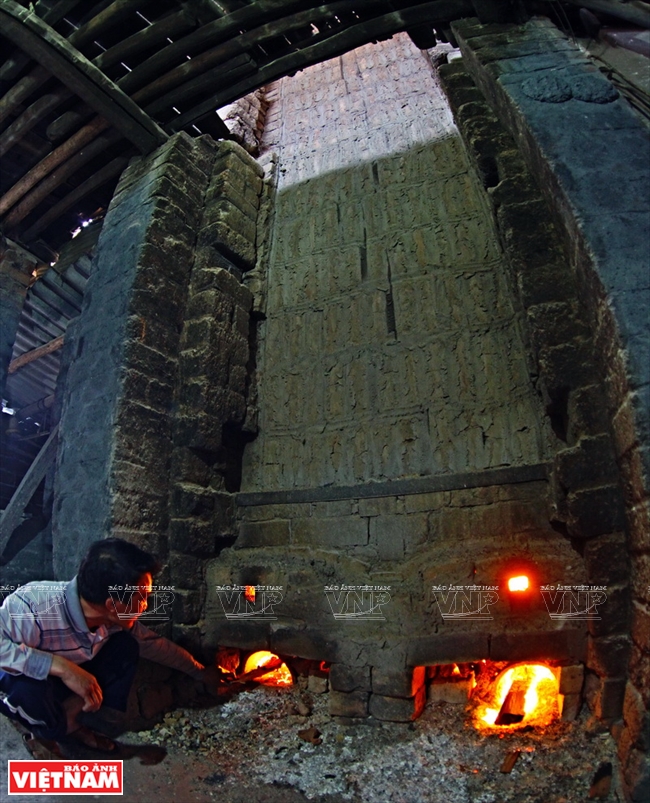
Using coal in baking pottery causes environmental pollution. Photo: Tran Cong Dat/VNP
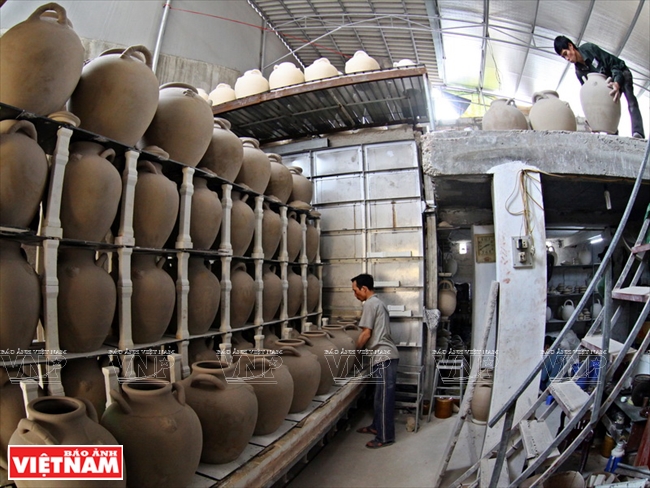
Fired by gas kilns, products can be marketed just 20 hours after being put into the kiln. Photo: Tran Cong Dat/VNP

Ruou can containers are produced in large numbers in Kim Lan Village. Photo: Tran Cong Dat/VNP
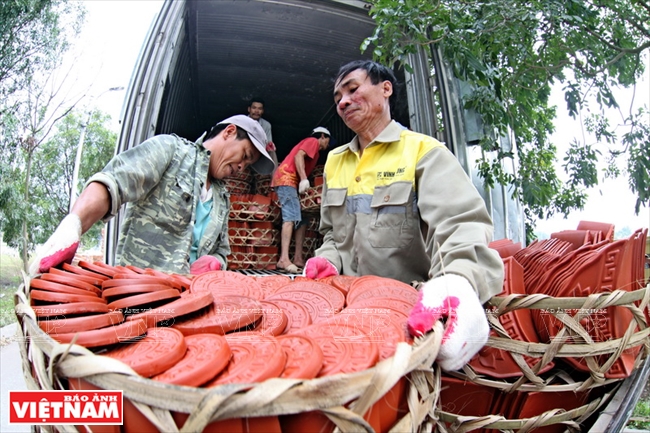
Tiles made in Kim Lan Village are sold in many central provinces like Quang Ngai and Quang Tri.
Photo: Tran Cong Dat/VNP
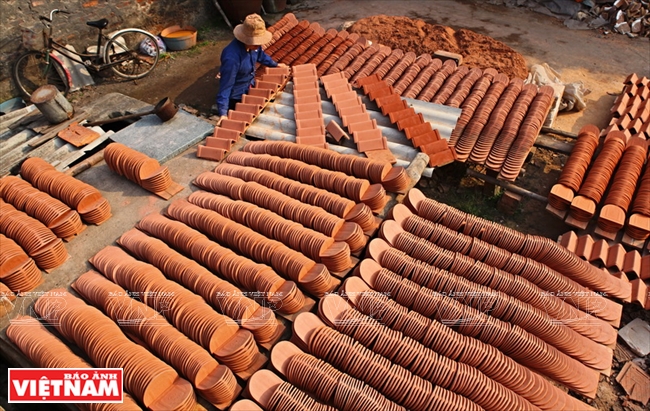
Kim Lan villagers have applied new technology in using gas kilns to enhance the competitiveness of pottery.
Photo: Tran Cong Dat/VNP |
Now most of households in the commune have shifted to baking pottery using gas. Five years ago, the commune had 1,000 households using traditional kilns, the number has now decreased to less than 100.
The application of this new technology has helped save energy, increased the competitiveness of local pottery in the market and improved the living environment. All serve as motivation for the locals to further develop the traditional craft.
Story: Quynh Anh - Photos: Cong Dat